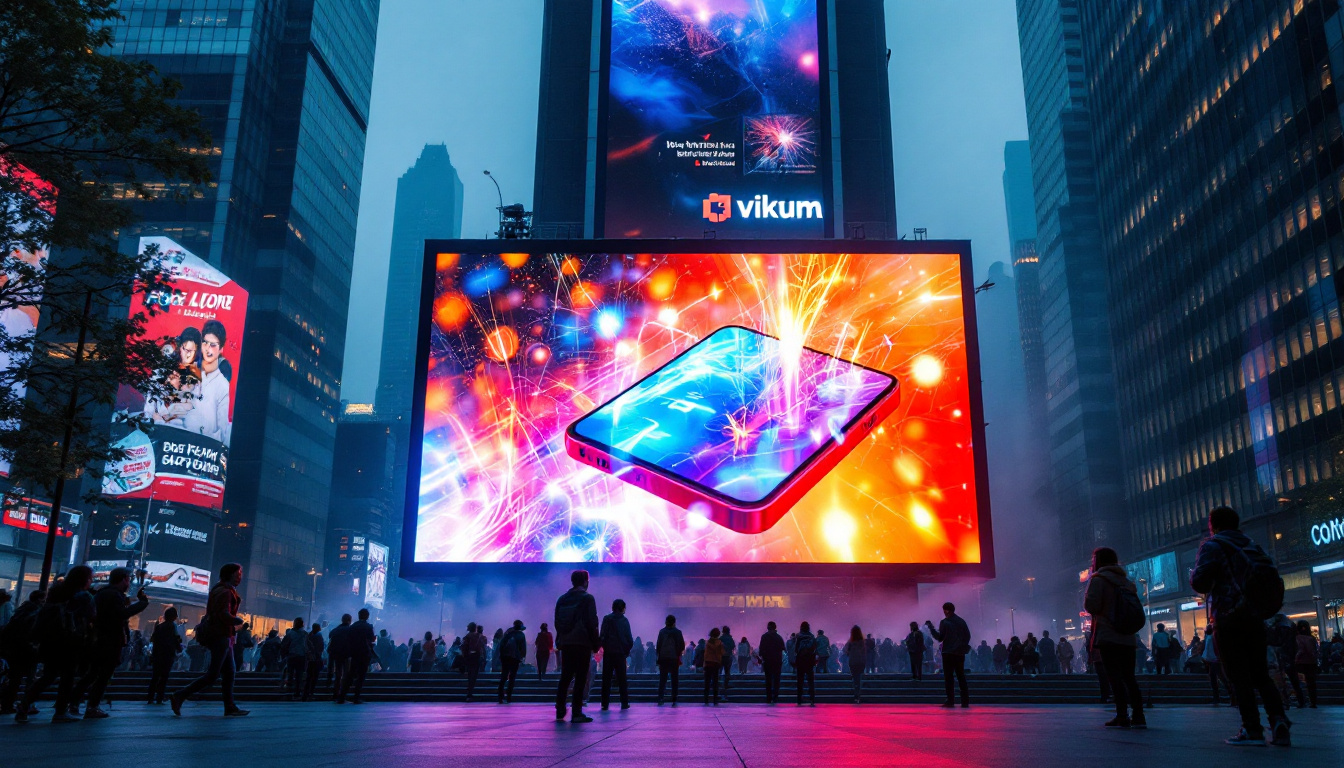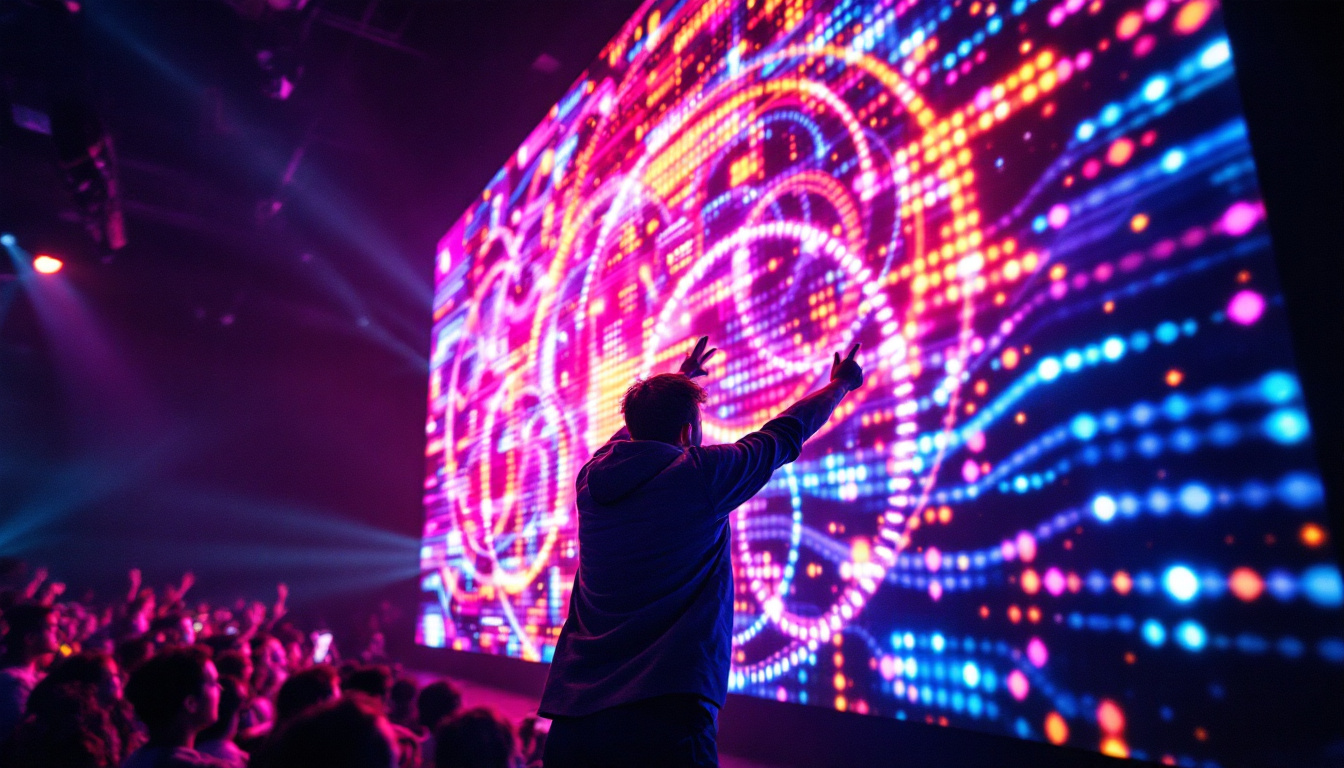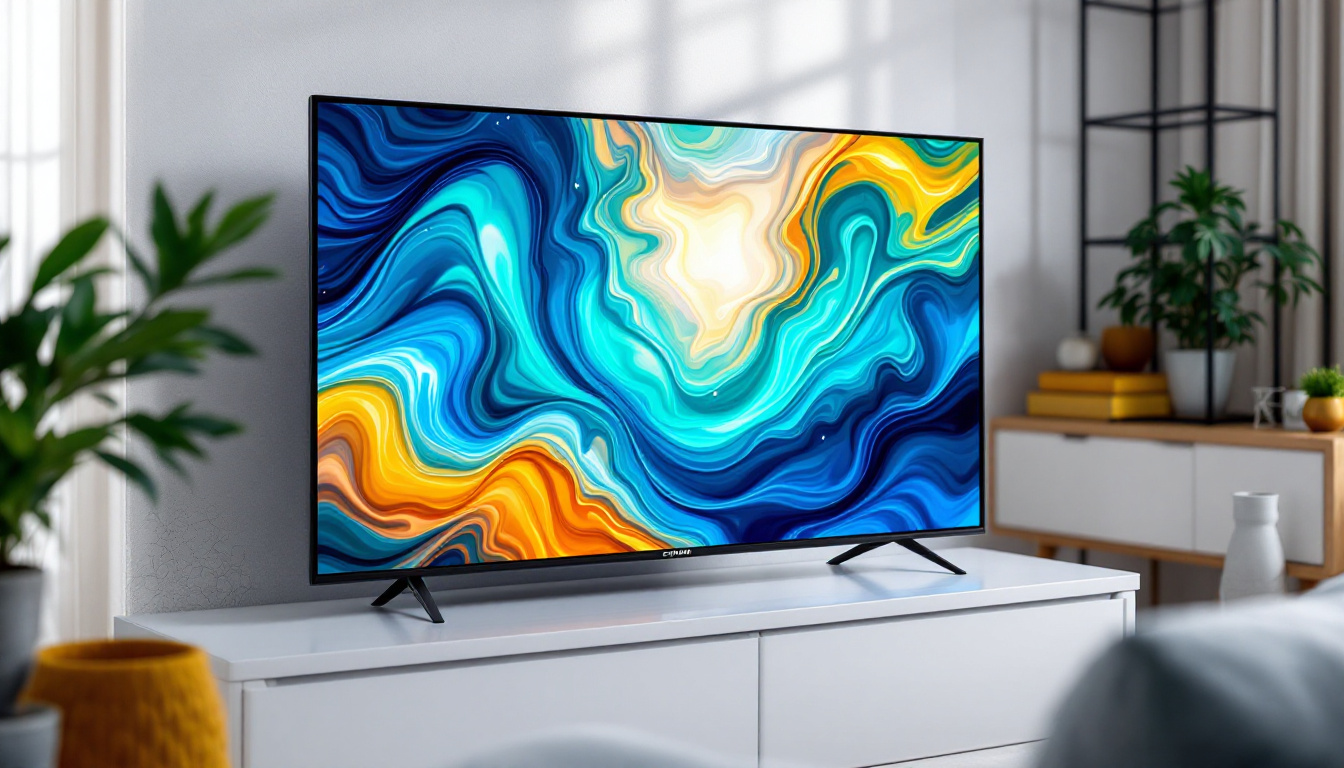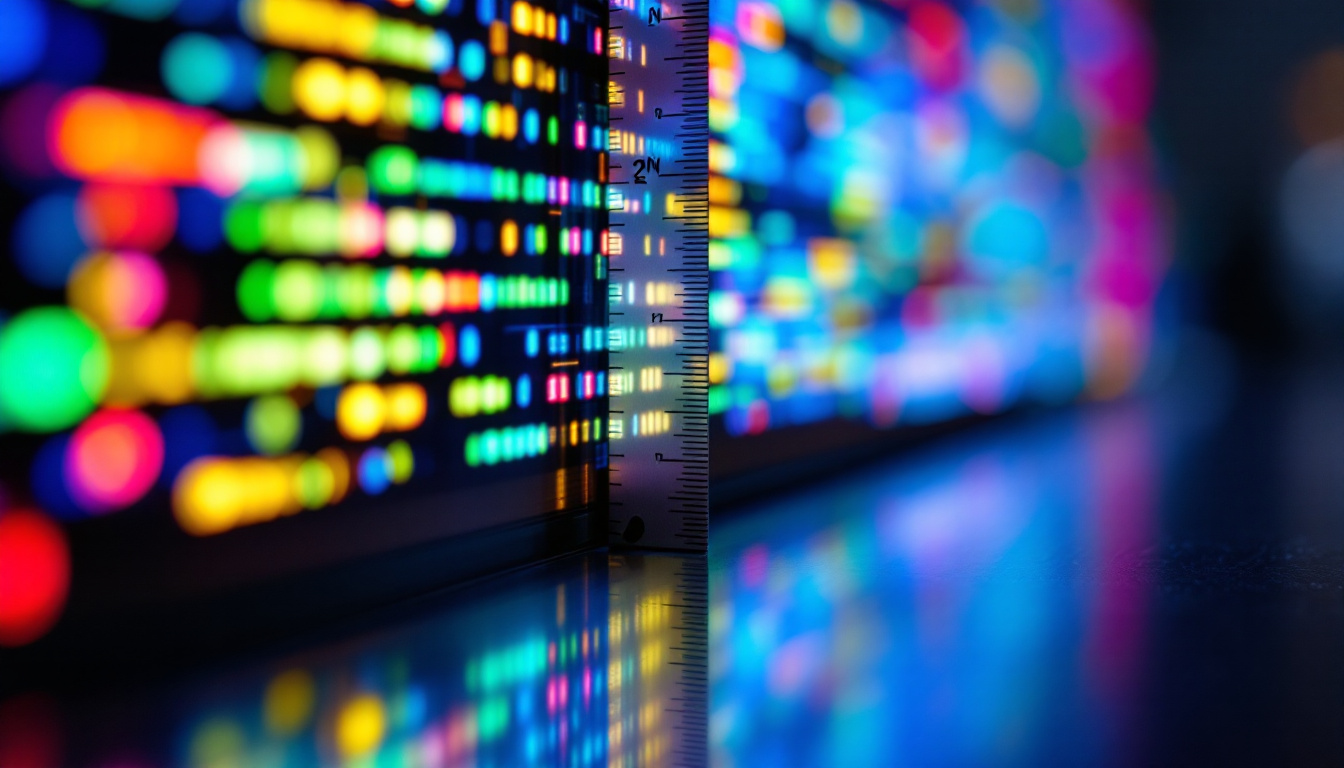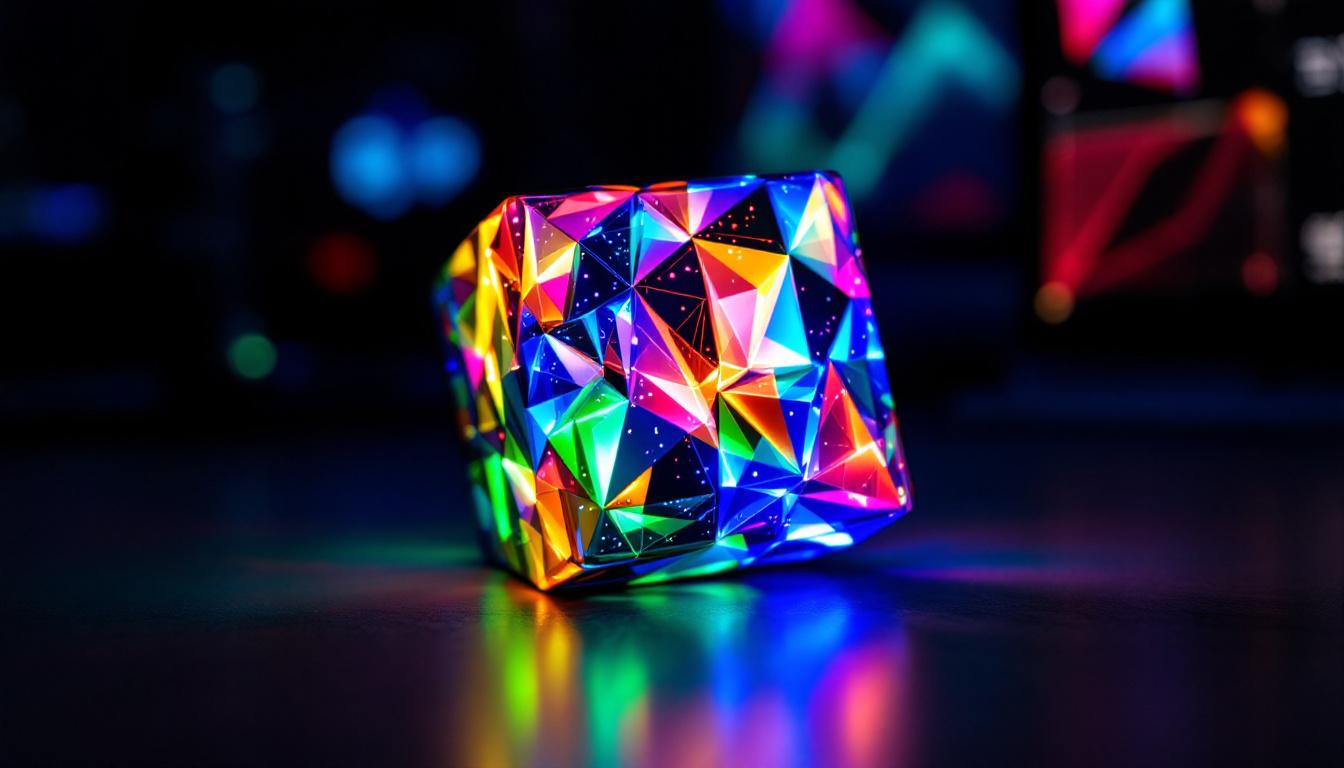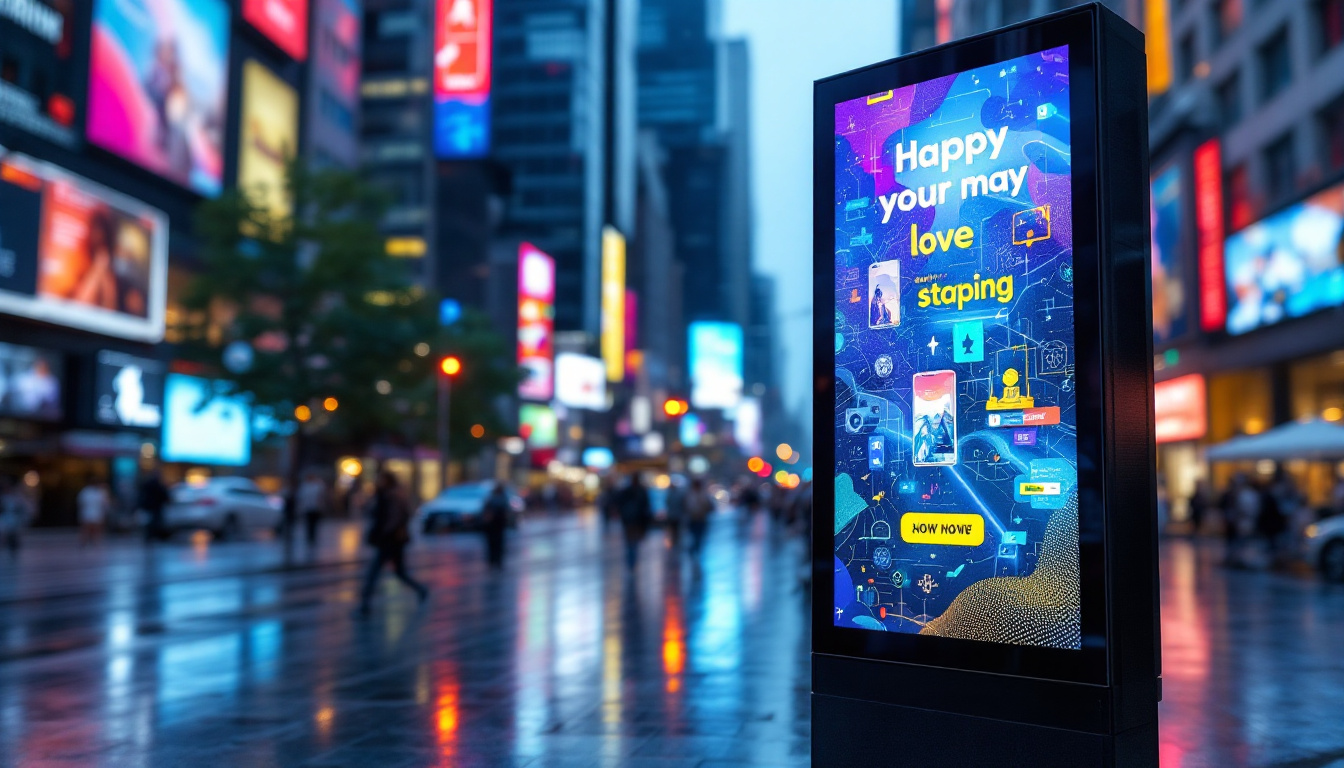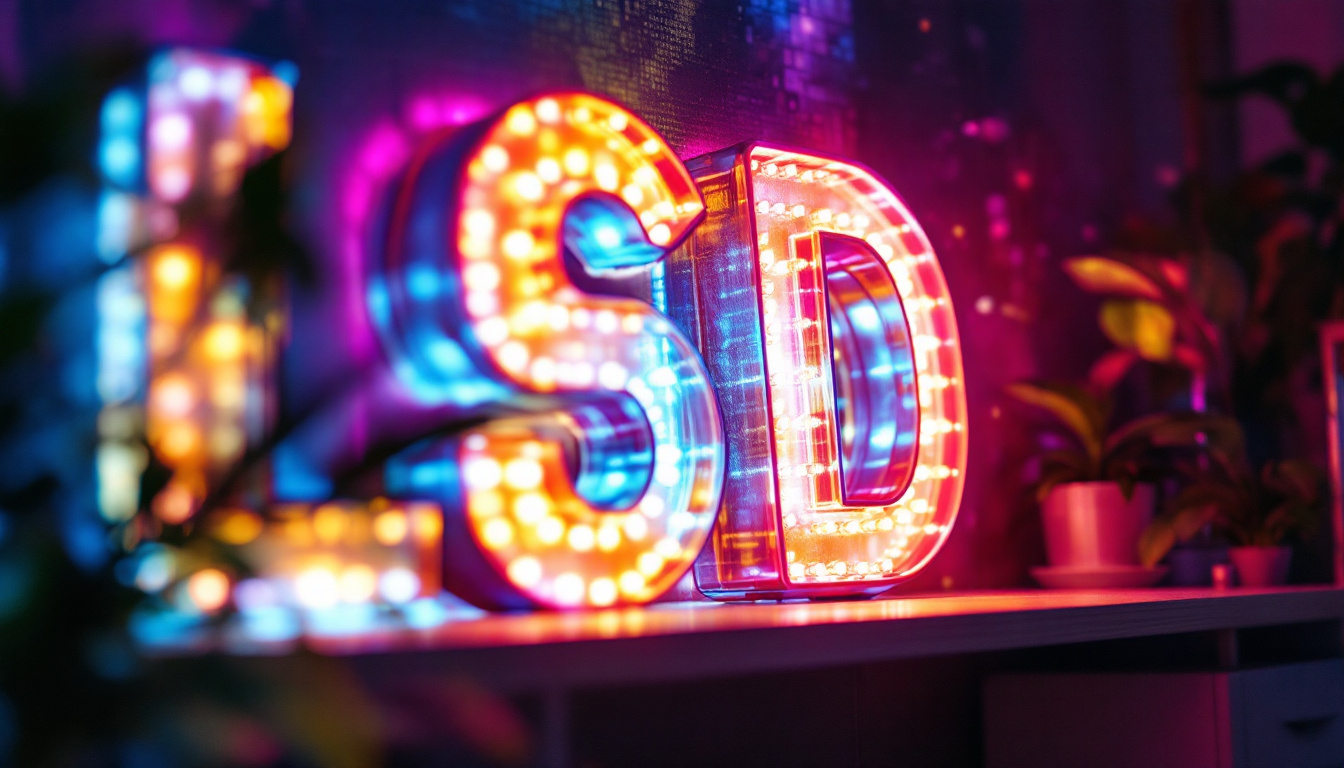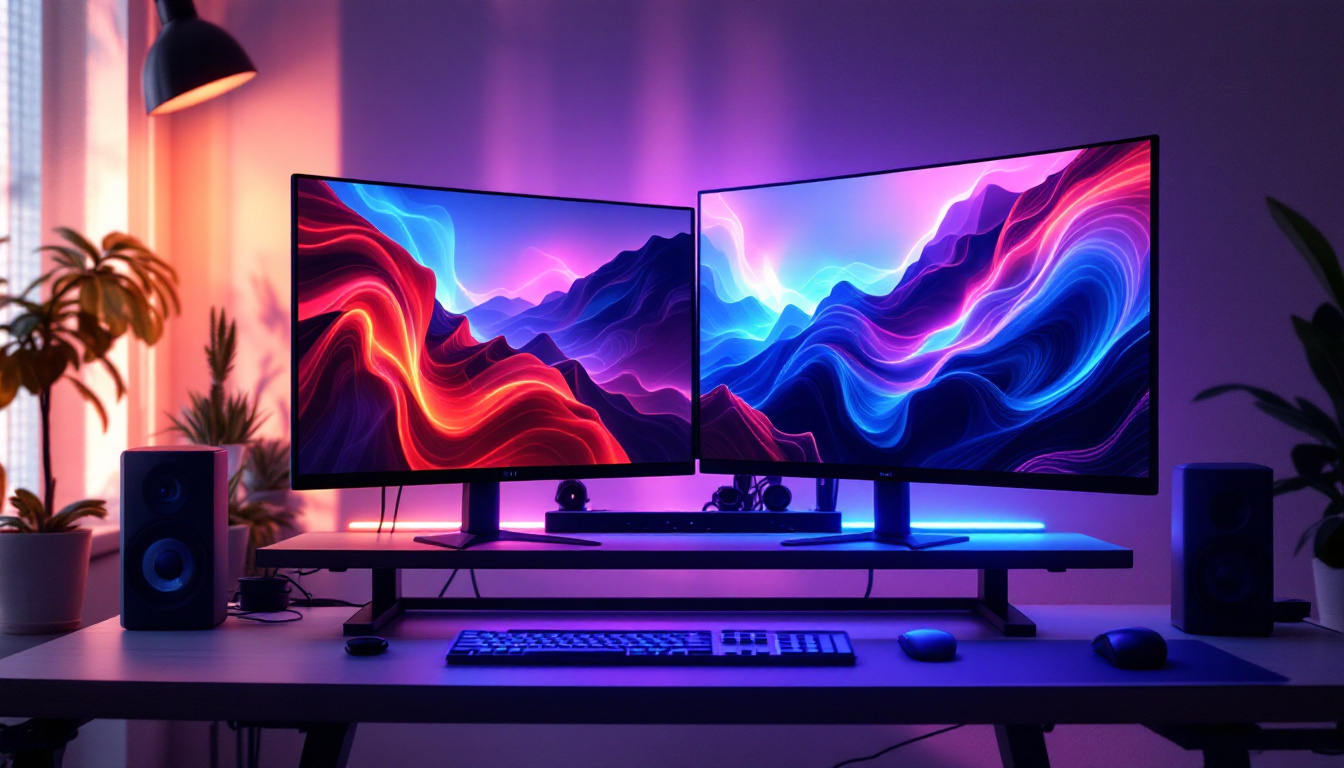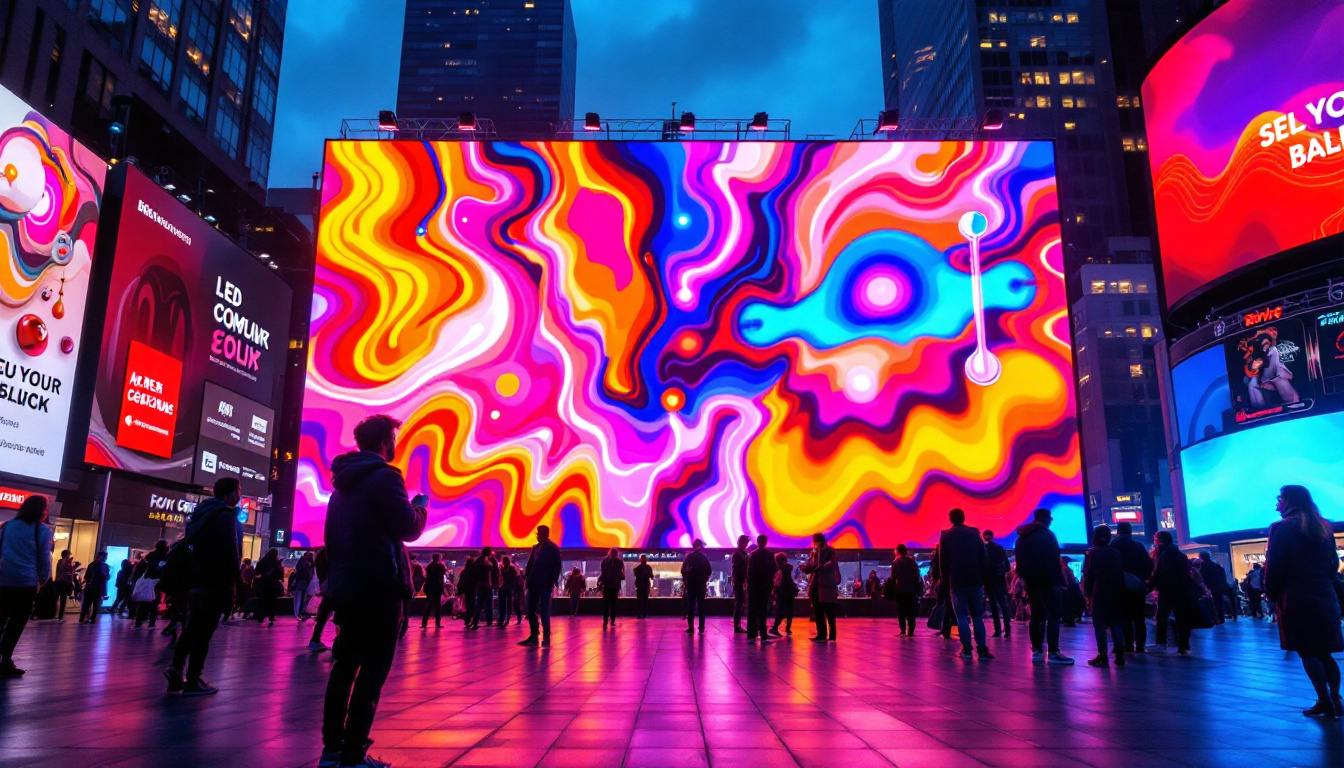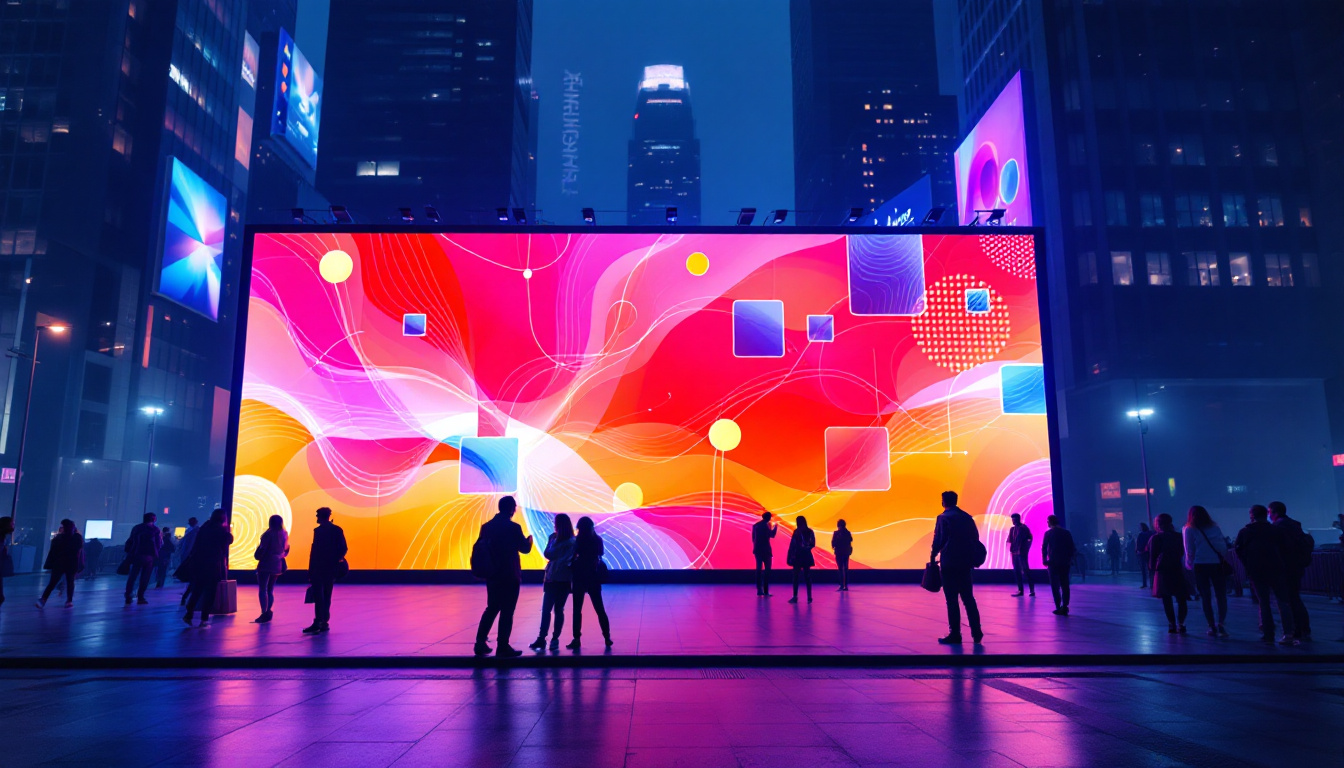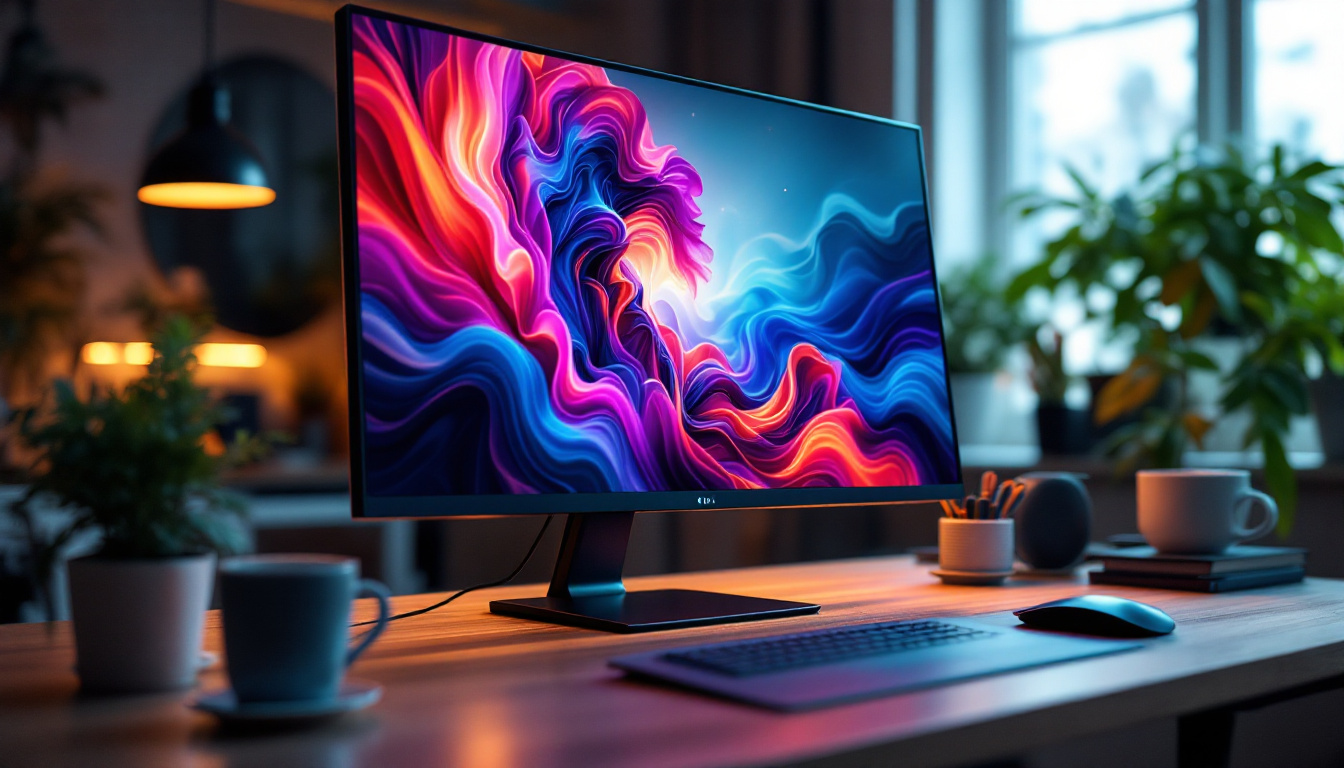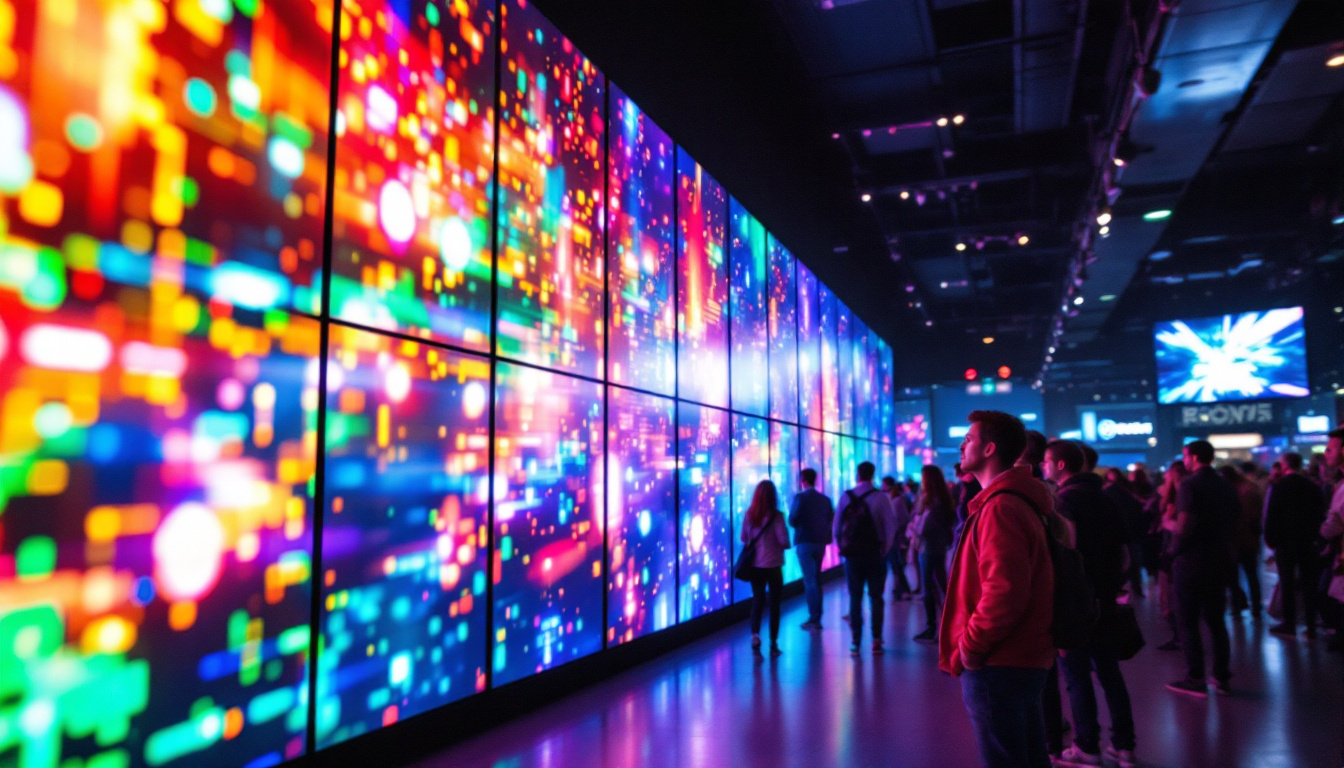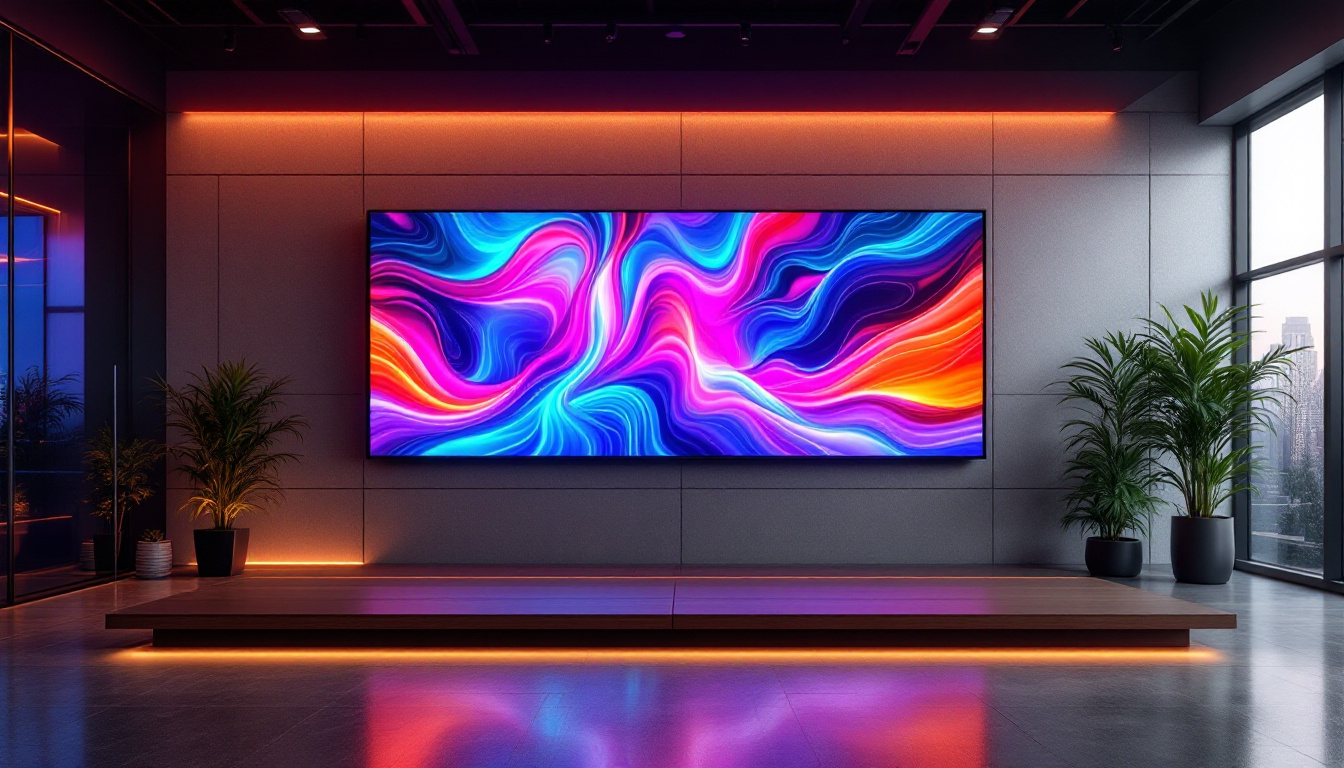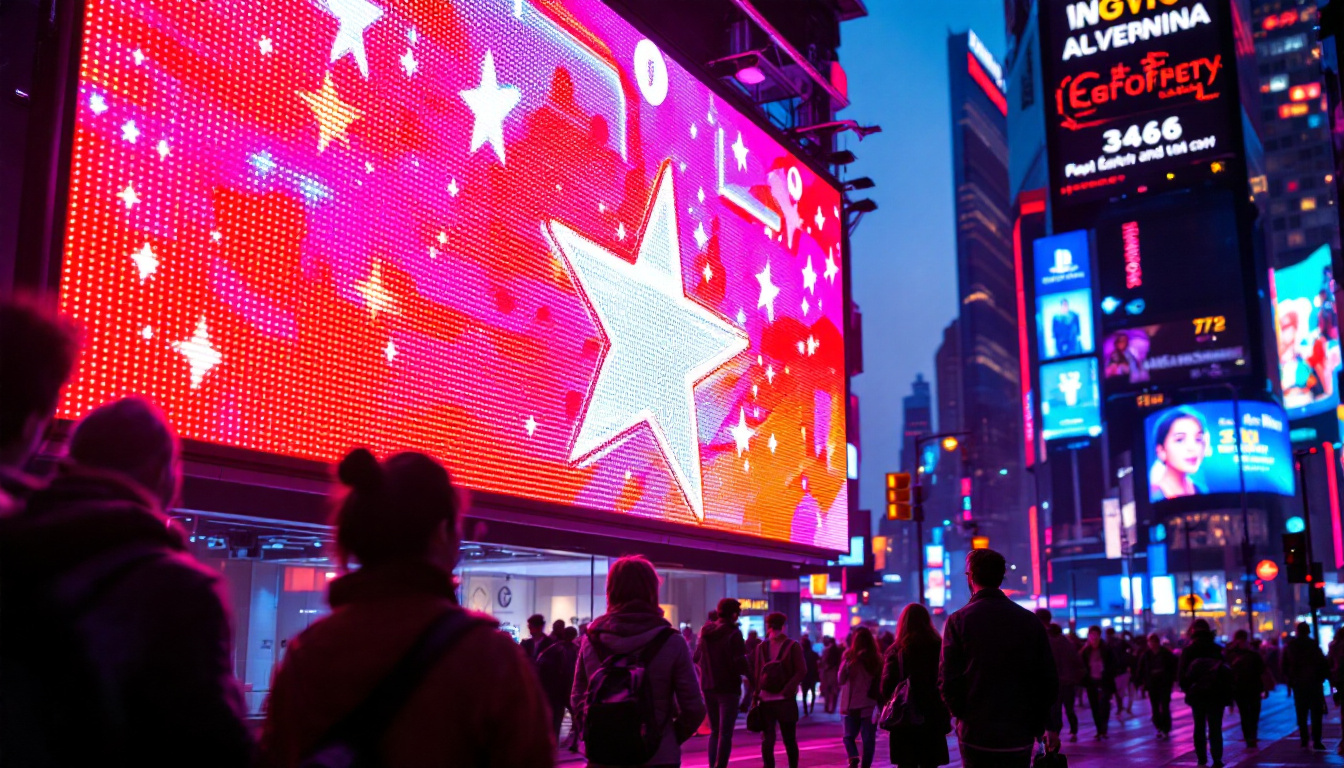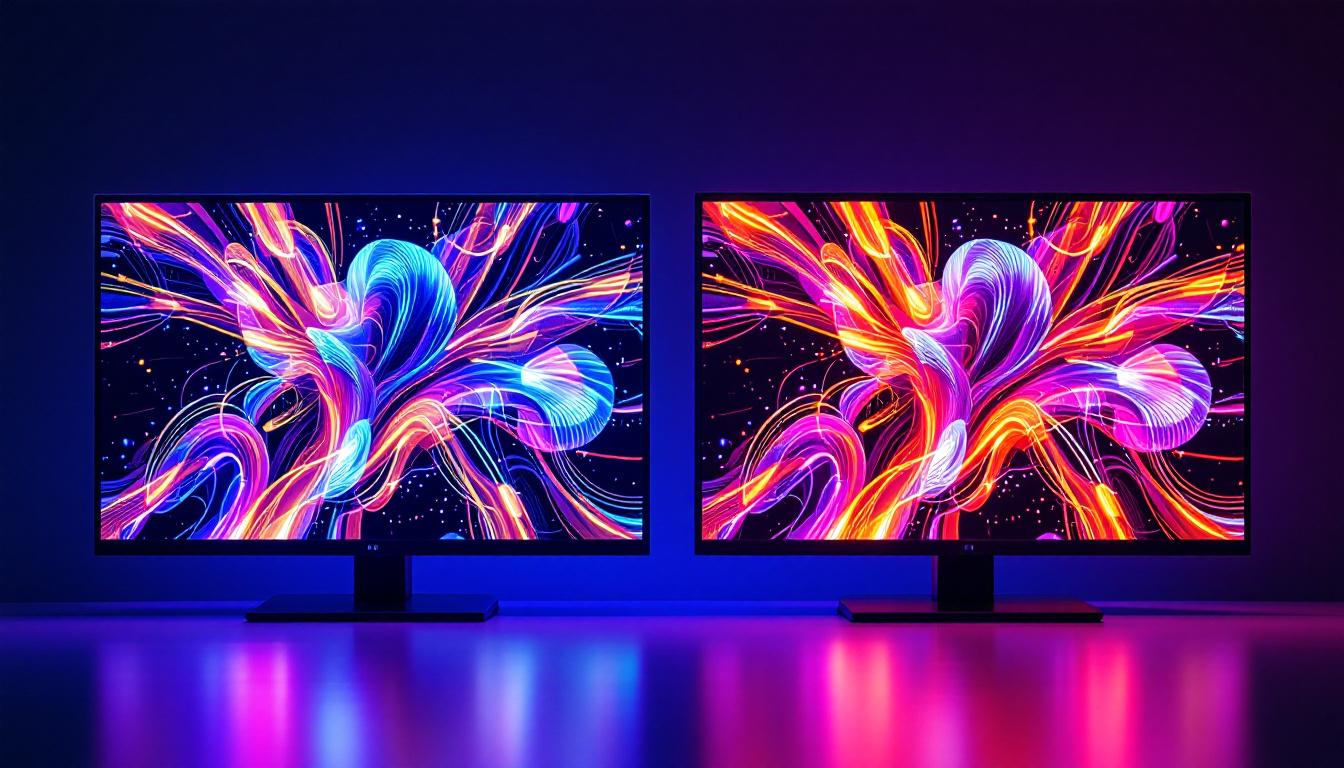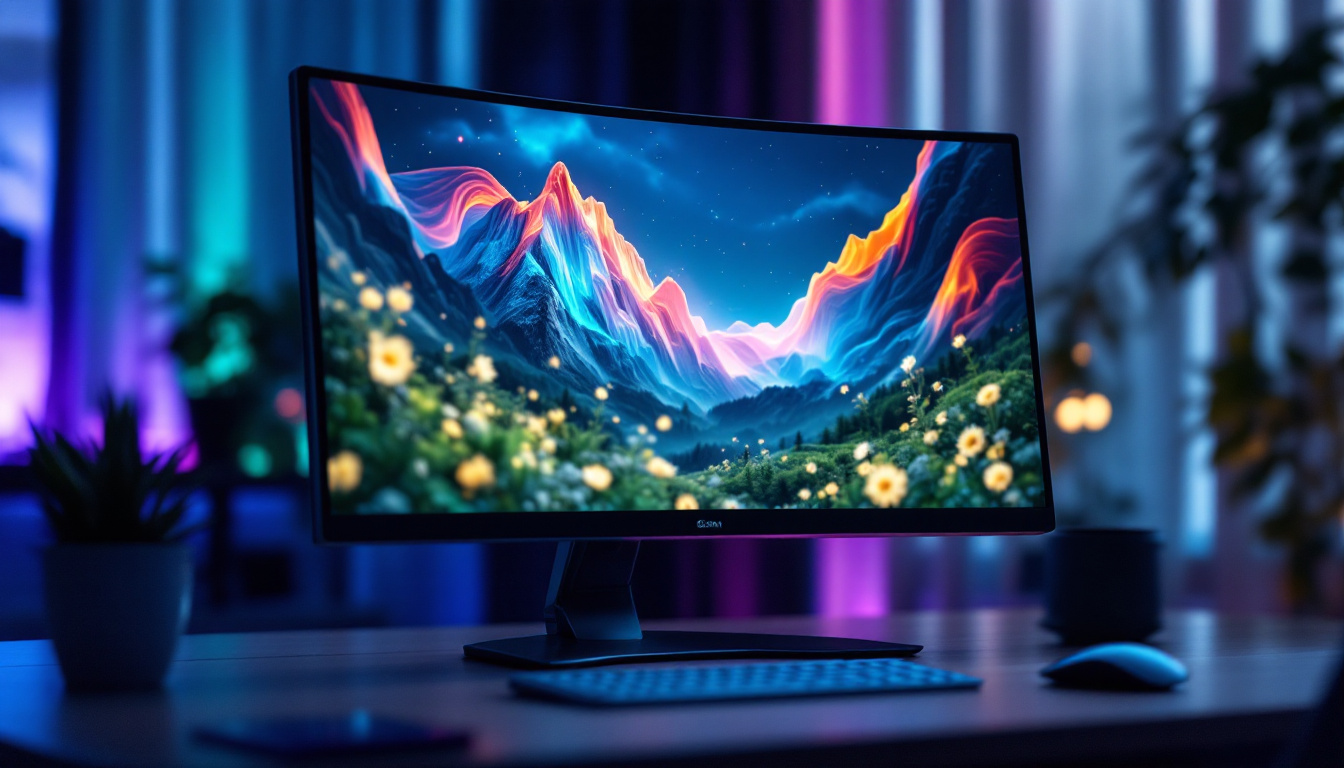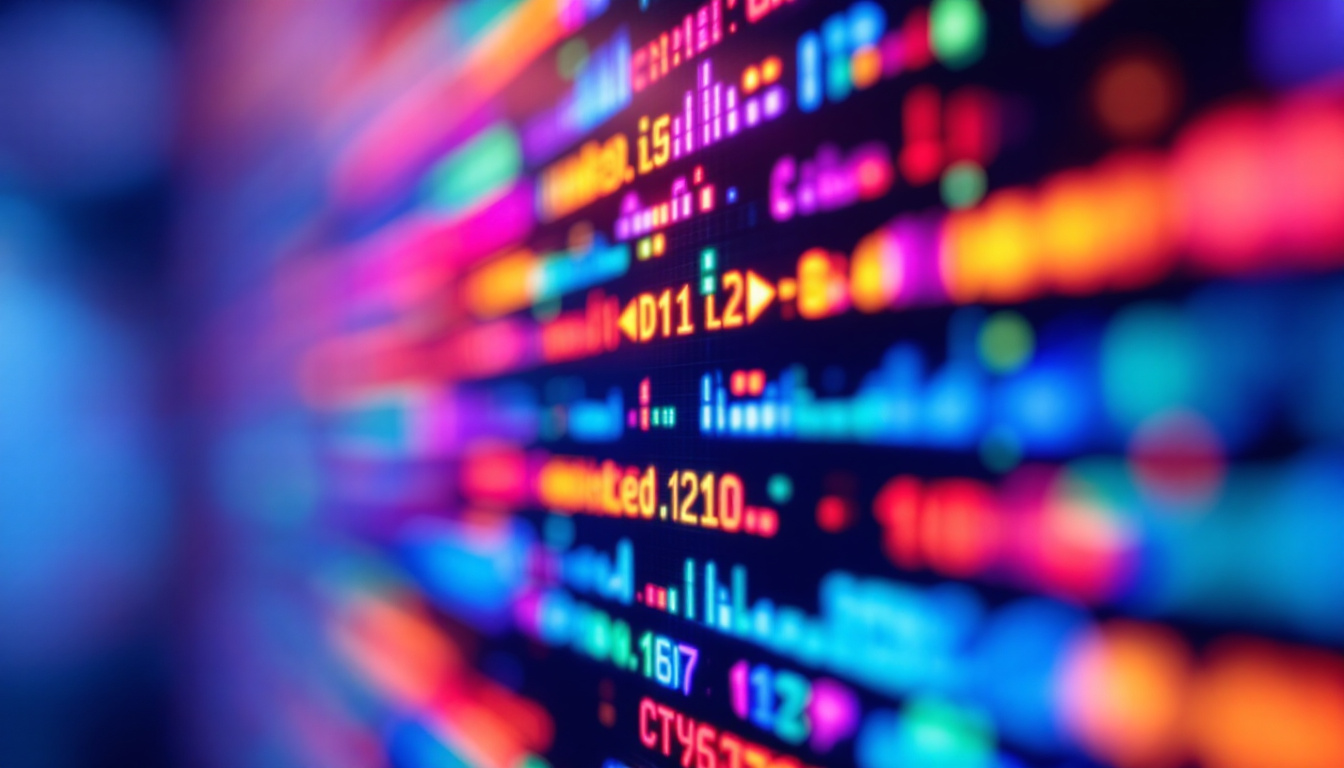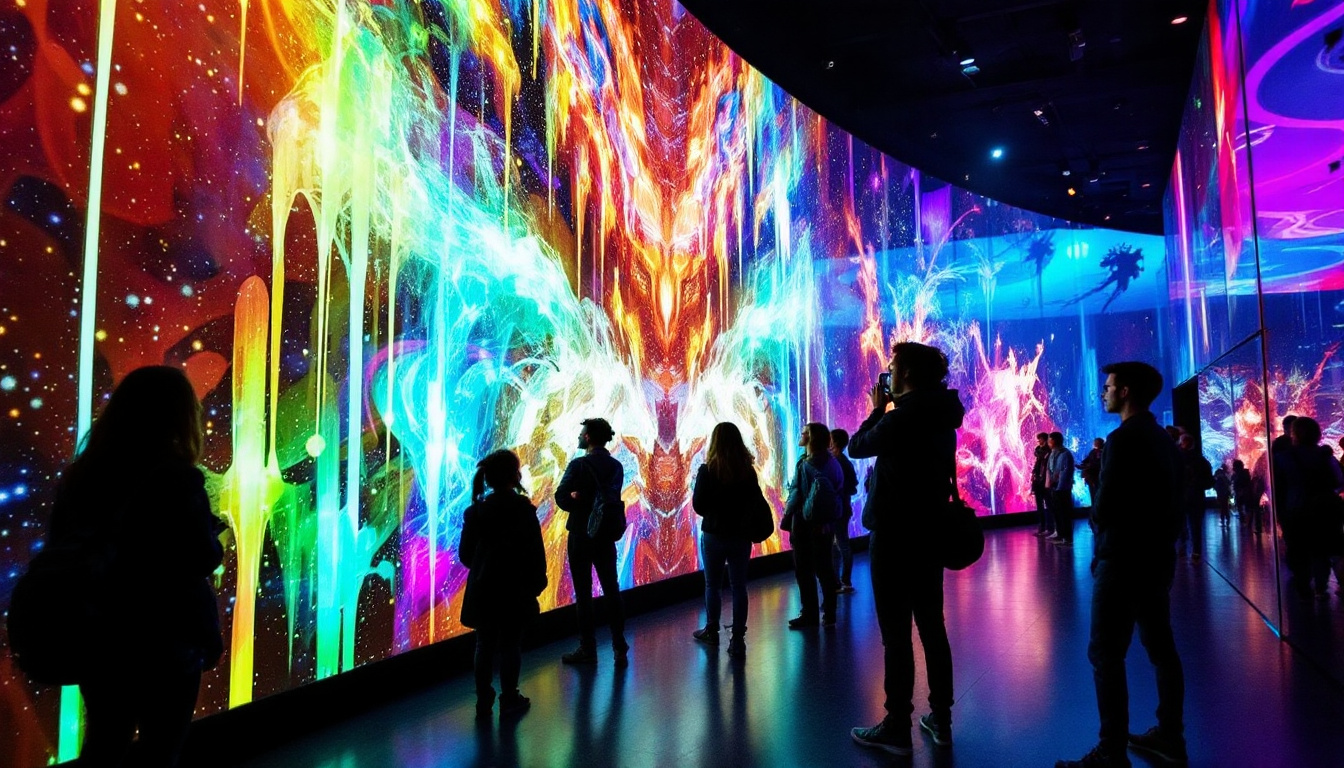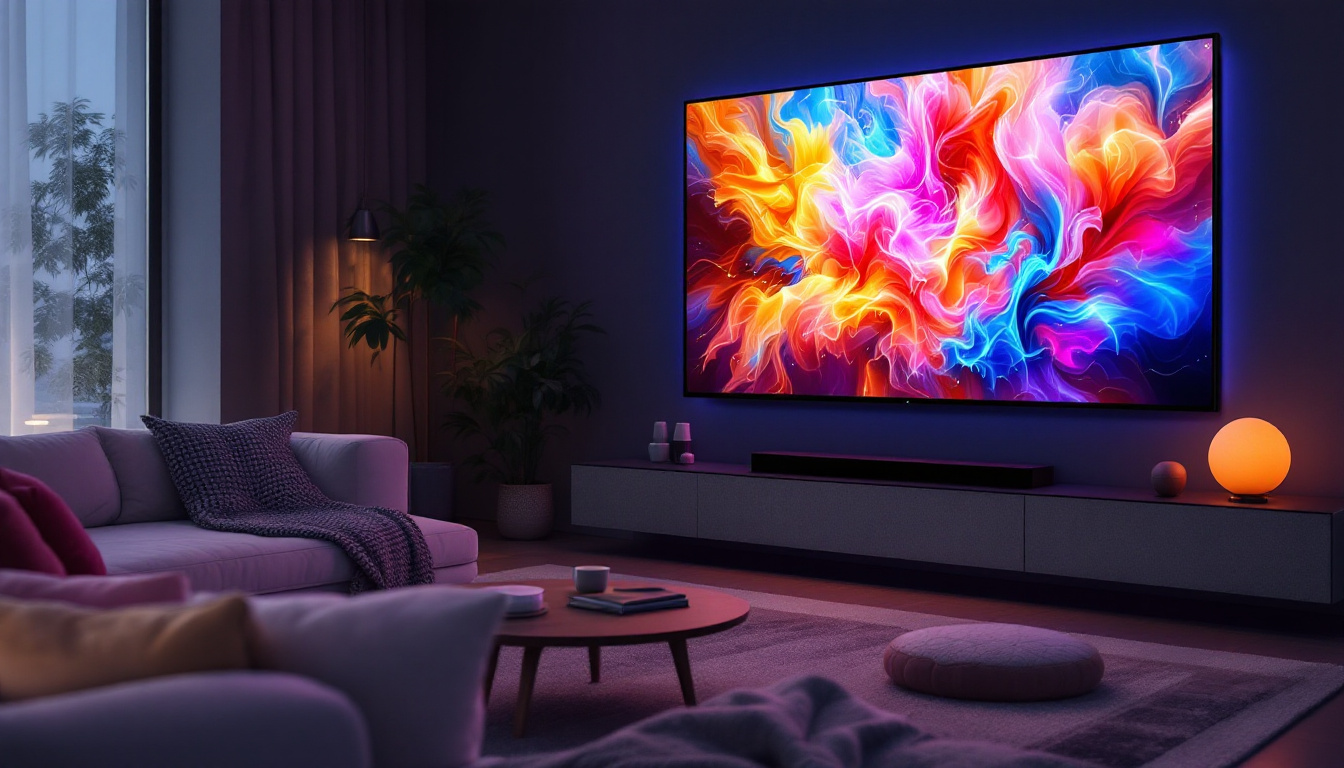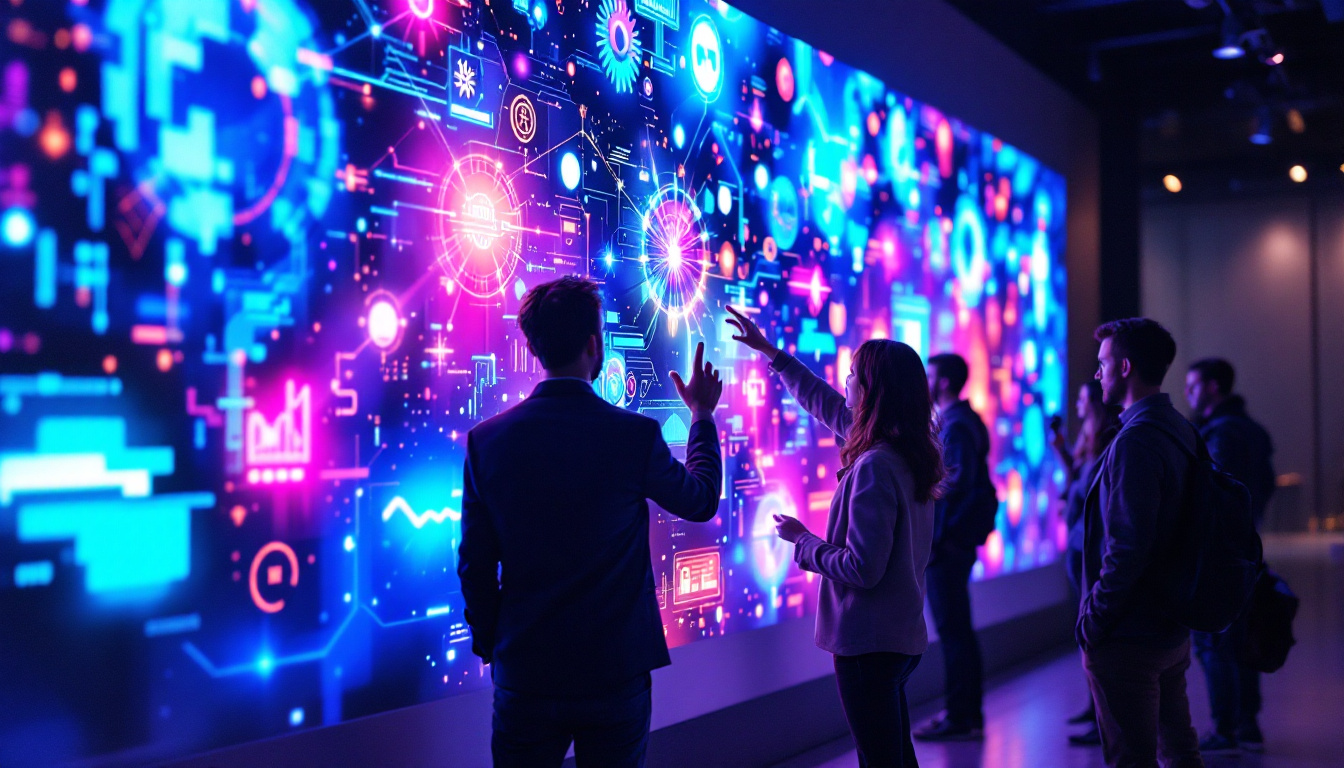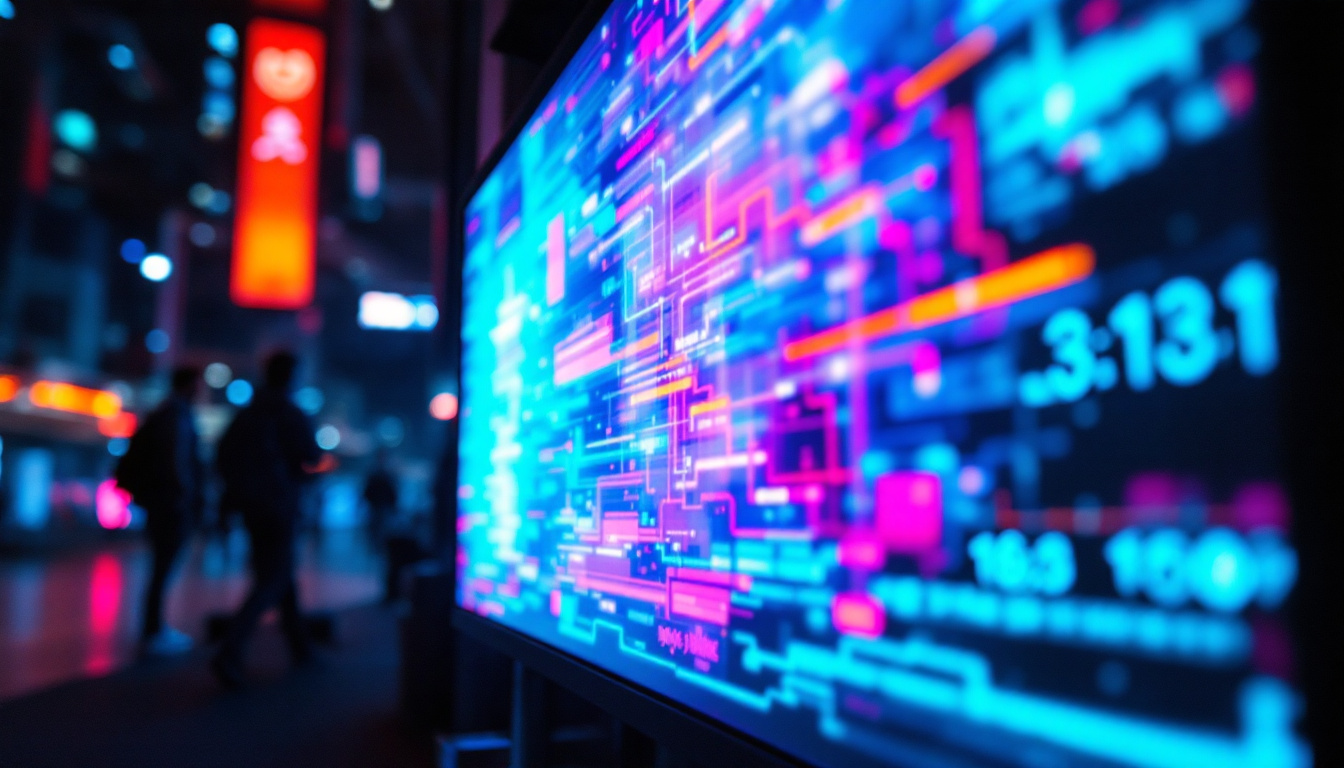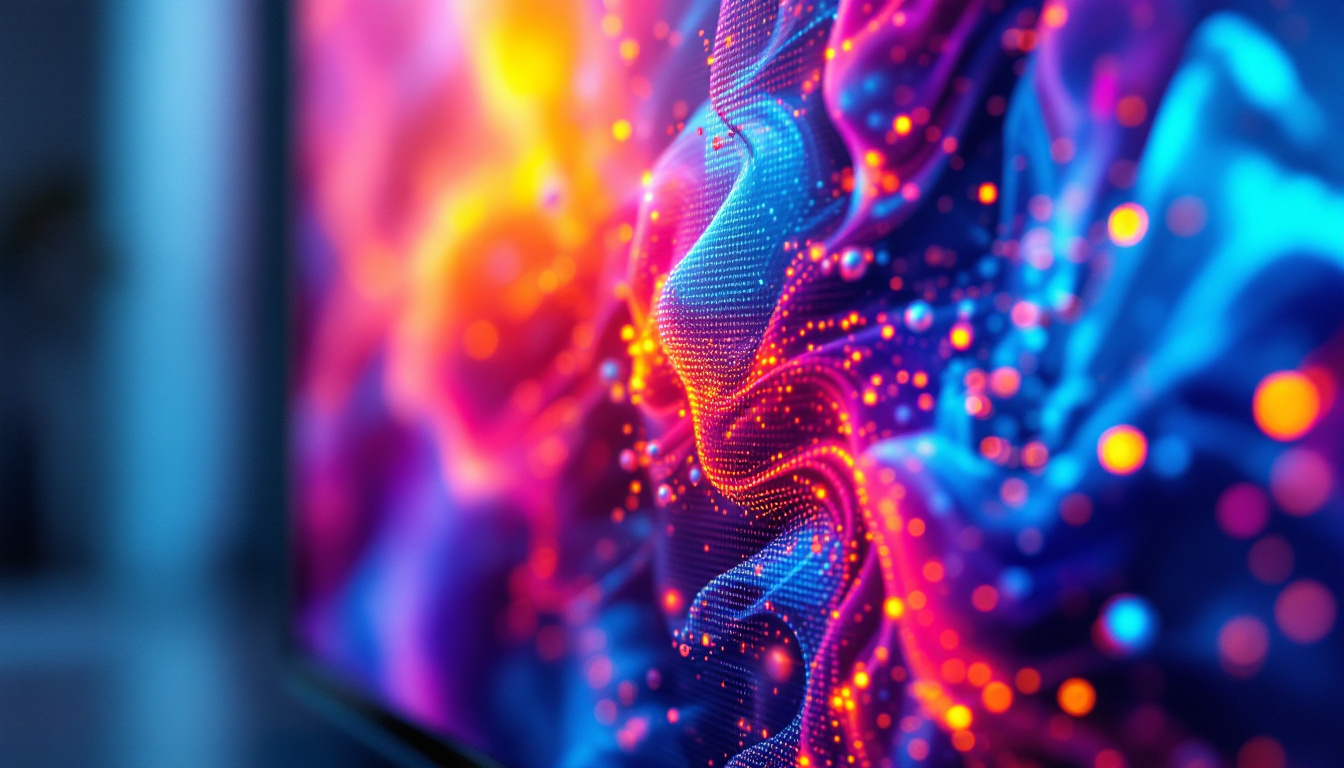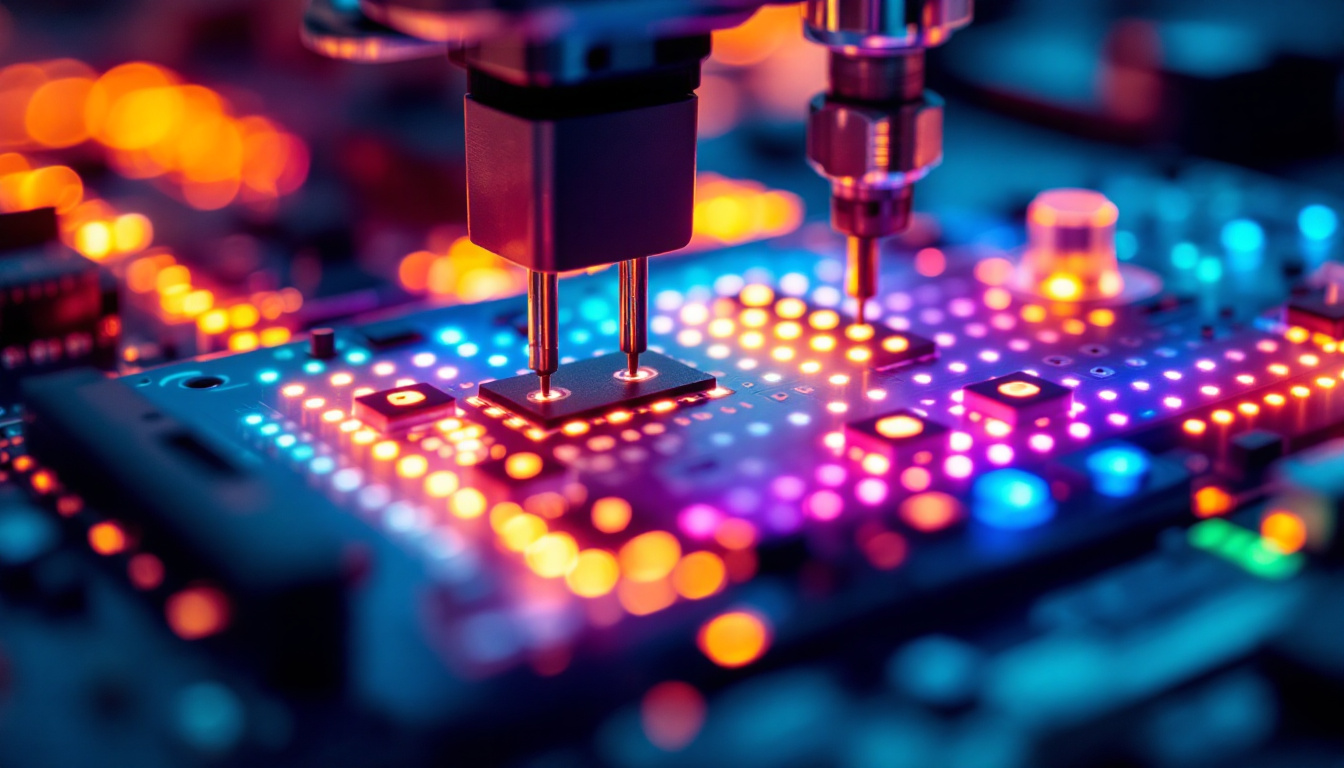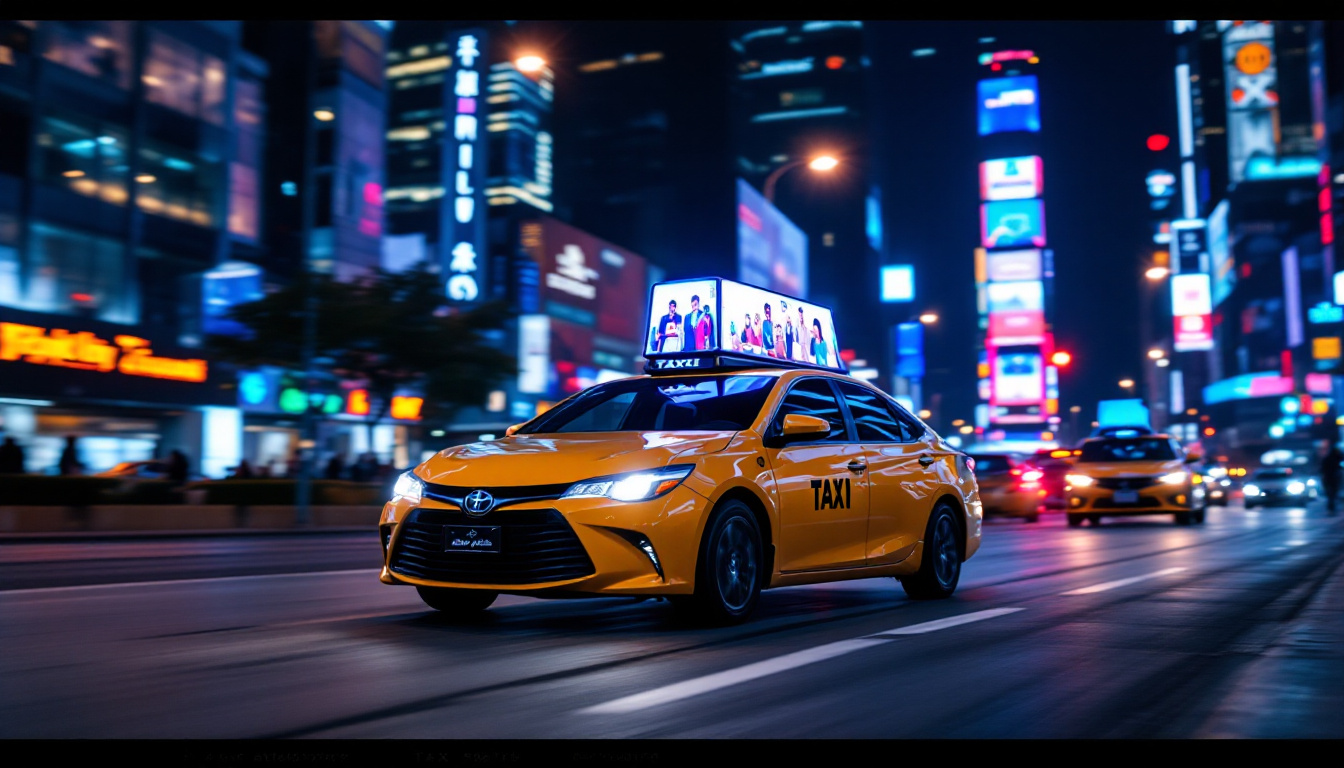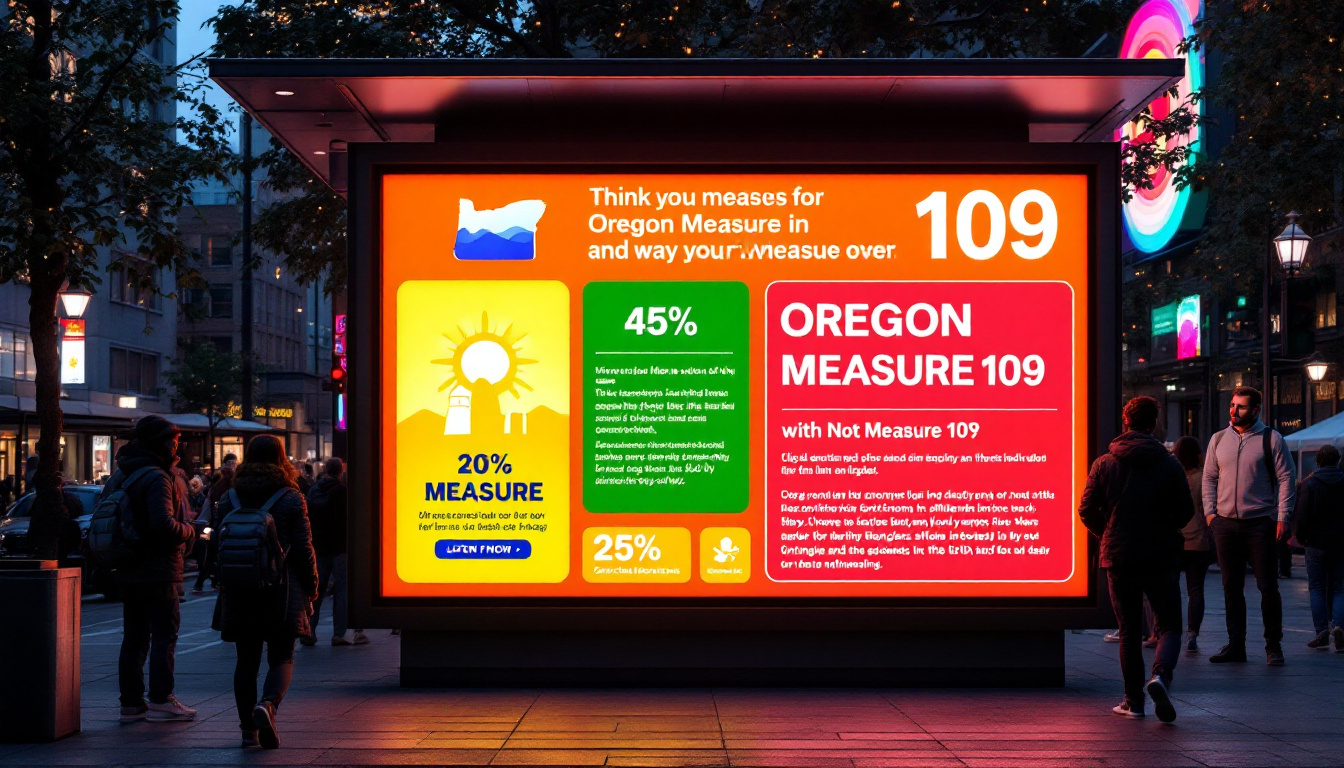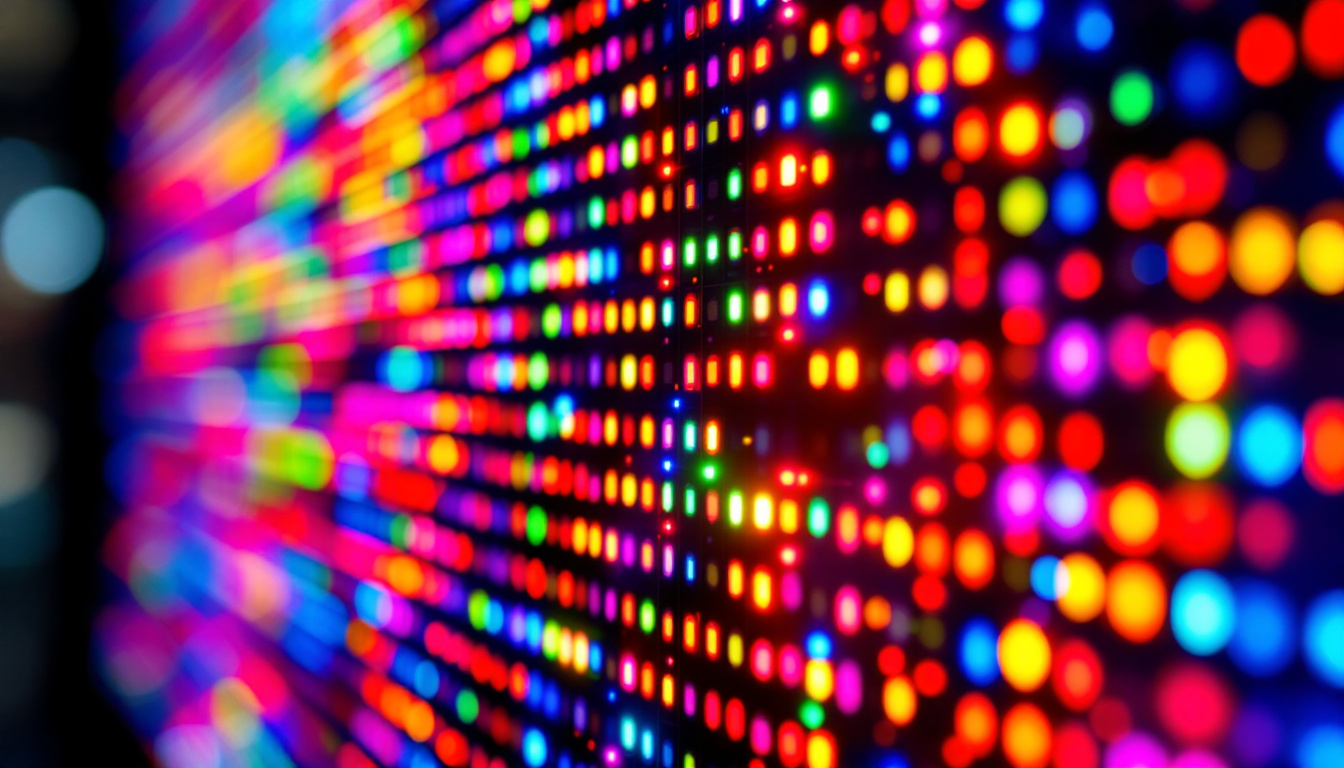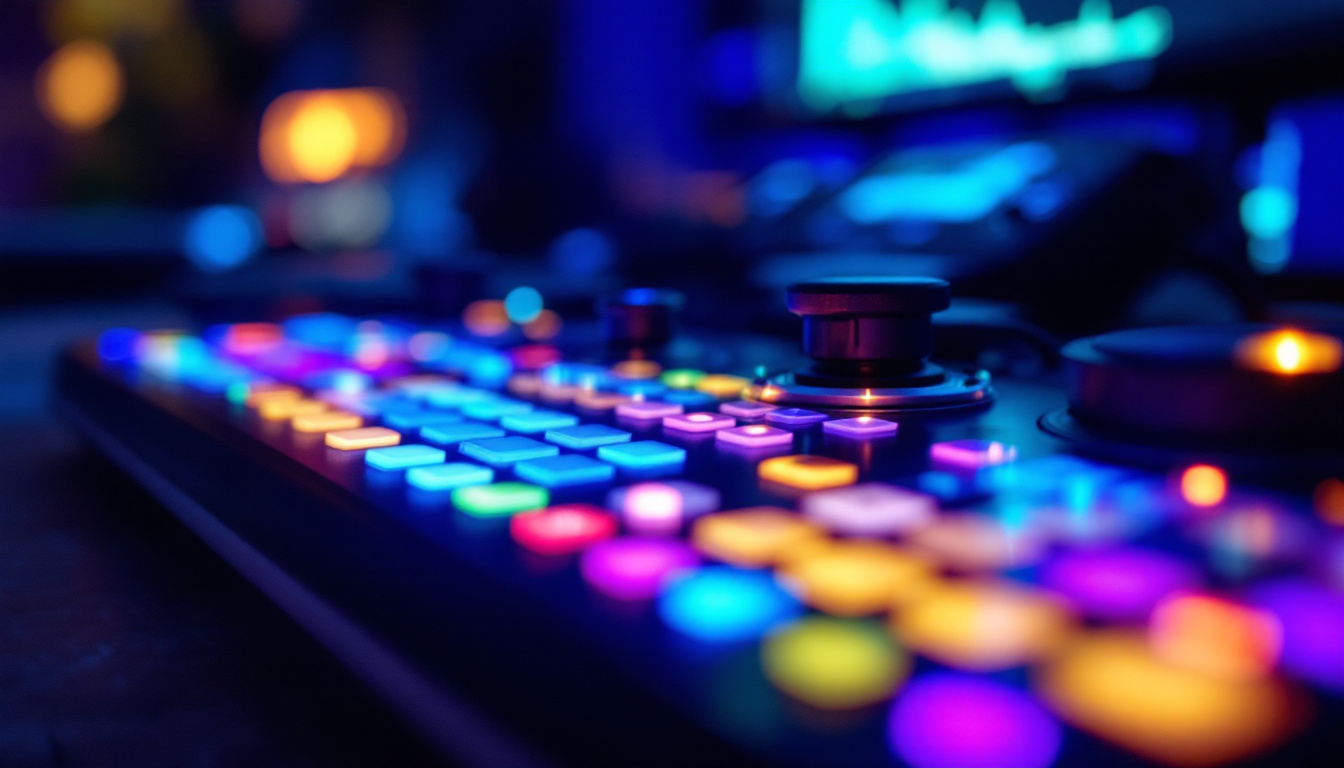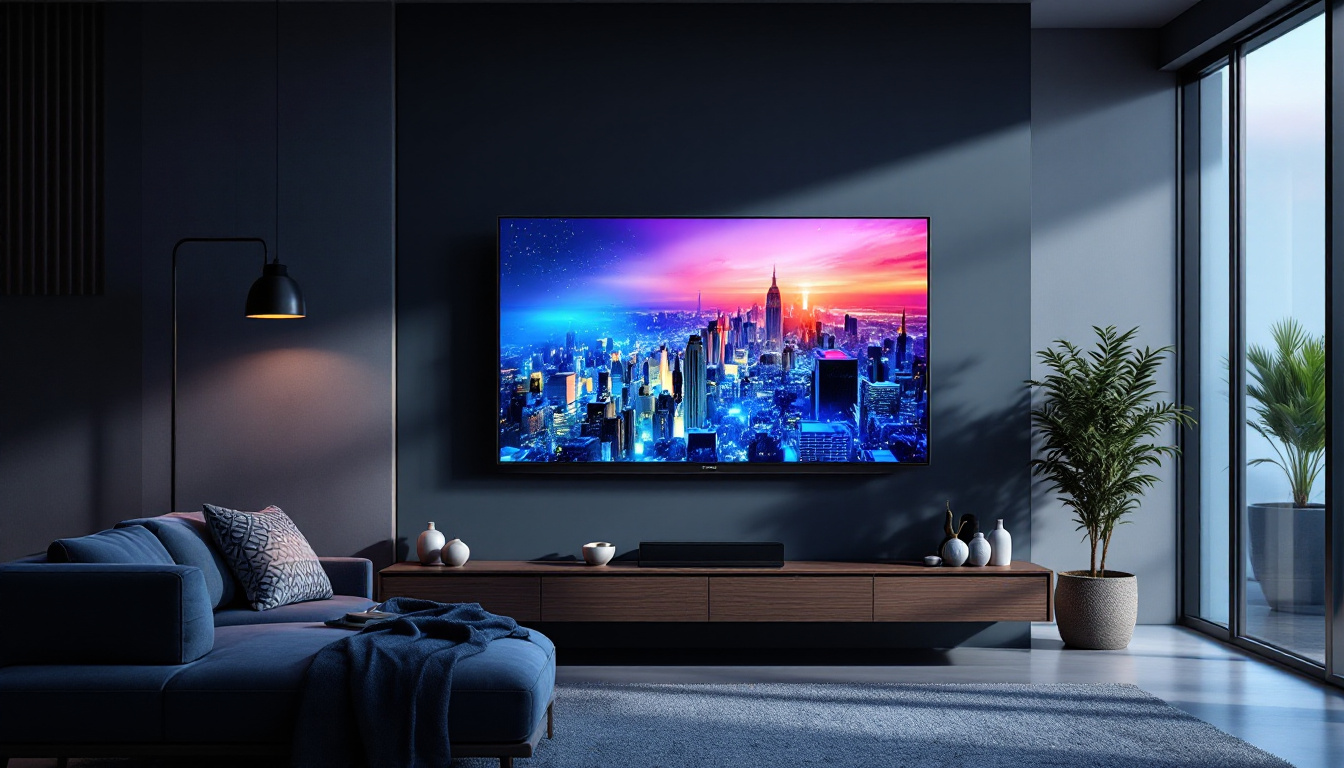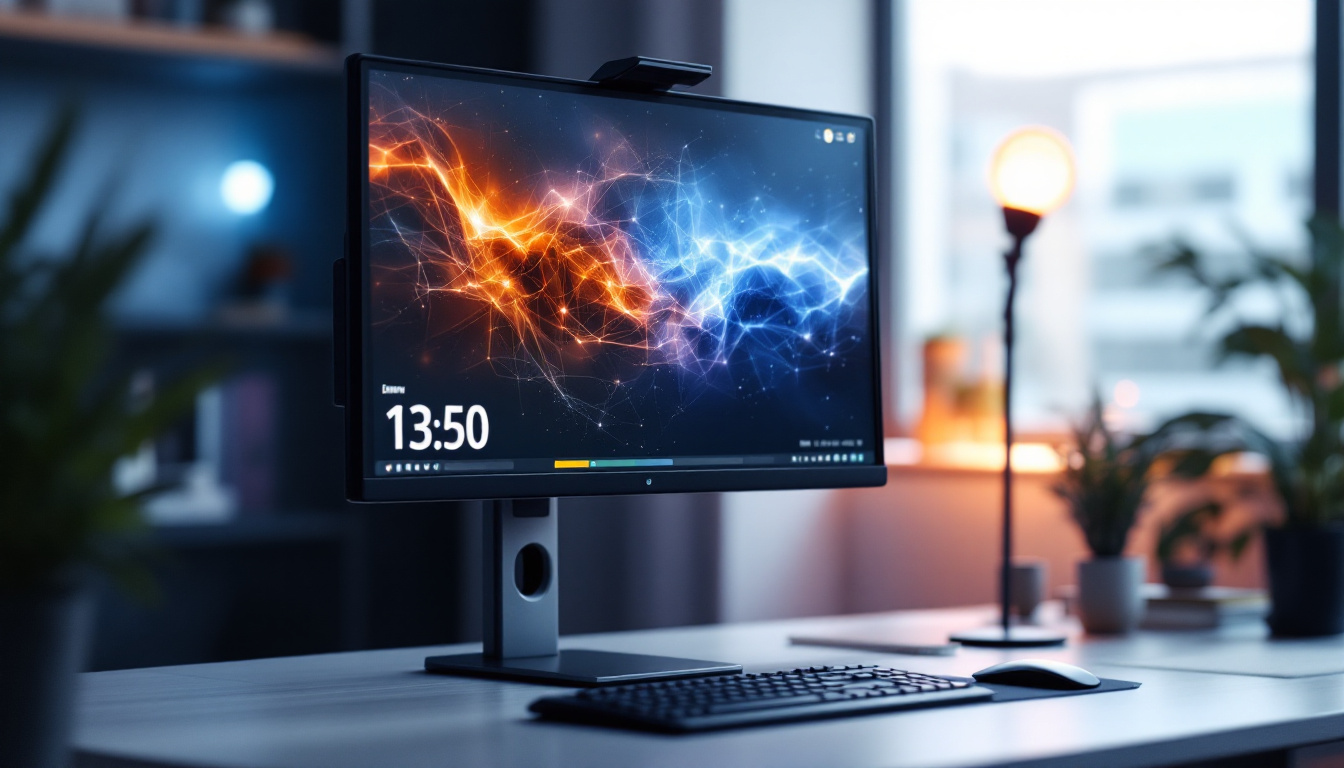Large LED Display Screen: LED Display Explained
In the modern world, technology has transformed the way information is presented and consumed. One of the most significant advancements in visual display technology is the large LED display screen. These screens have become ubiquitous in various settings, from advertising billboards to sports arenas and corporate events. This article aims to delve into the intricacies of LED displays, exploring their technology, applications, and benefits.
Understanding LED Technology
LED, or Light Emitting Diode, is a semiconductor device that emits light when an electric current passes through it. This technology has revolutionized the display industry due to its efficiency, longevity, and brightness. Unlike traditional display technologies, LEDs can produce vibrant colors and high contrast ratios, making them ideal for large display screens. Furthermore, the compact size of LEDs allows for versatile design options, enabling manufacturers to create displays that are thinner and lighter than ever before, thus expanding their application across various industries.
In addition to their visual advantages, LED technology also contributes to environmental sustainability. With a significantly longer lifespan—often exceeding 50,000 hours—LEDs reduce the frequency of replacements, leading to less electronic waste. Their lower energy consumption not only results in cost savings for consumers but also decreases the carbon footprint associated with energy production. As awareness of environmental issues grows, the shift towards LED technology represents a significant step towards greener practices in lighting and display solutions.
The Basics of LED Operation
At the core of LED technology is the principle of electroluminescence. When electrons recombine with holes in a semiconductor, energy is released in the form of photons, resulting in light. This process is highly efficient, allowing LED displays to consume significantly less power compared to older technologies like LCD or plasma screens. The ability to control the intensity and color of the emitted light through various semiconductor materials further enhances the versatility of LEDs, making them suitable for a wide range of applications from simple indicator lights to complex display systems.
LEDs can be categorized into two main types: individual LEDs and LED modules. Individual LEDs are often used in smaller displays, while LED modules are assembled in larger configurations to create extensive screens. These modules can be combined in various ways to form screens of different sizes and resolutions. The modular nature of LED technology not only allows for easy scalability but also facilitates repairs and upgrades, as individual modules can be replaced without the need to dismantle the entire display. This adaptability is particularly beneficial in settings where technology evolves rapidly, such as in the entertainment and advertising industries.
Types of LED Displays
There are several types of LED displays, each designed for specific applications. The most common types include:
- Direct View LED Displays: These are made up of individual LEDs that are visible to the viewer. They are often used for large outdoor billboards and indoor screens, providing high visibility even in bright sunlight.
- LED Video Walls: Composed of multiple LED panels, video walls can create a seamless large display for events, concerts, and exhibitions. These displays are capable of showcasing dynamic content, making them a popular choice for immersive experiences.
- Transparent LED Displays: These innovative displays allow light to pass through, making them ideal for retail environments where visibility from both sides is essential. They can be integrated into glass surfaces, creating eye-catching advertising opportunities without obstructing the view.
- Flexible LED Displays: Emerging as a game-changer in the industry, flexible LED displays can be bent and shaped to fit unconventional spaces. This adaptability opens up new possibilities for creative installations, allowing designers to push the boundaries of traditional display formats.
Applications of Large LED Displays
Large LED displays have a wide array of applications across various sectors. Their versatility and effectiveness in conveying information make them a preferred choice in numerous settings.
Advertising and Marketing
One of the most prominent uses of large LED displays is in advertising. Billboards and digital signage in high-traffic areas can capture the attention of passersby with vibrant colors and dynamic content. Advertisers can change their messages quickly, allowing for real-time promotions and targeted marketing strategies.
Moreover, the ability to display videos and animations enhances engagement, making large LED displays an effective tool for brand visibility. Companies can showcase their products, services, and events in a captivating manner that traditional print media cannot achieve.
Events and Entertainment
In the entertainment industry, large LED displays are indispensable. Concerts, sports events, and festivals utilize these screens to provide audiences with a better viewing experience. High-definition visuals and live feeds ensure that even those seated far from the stage can enjoy the performance.
Additionally, event organizers can use LED displays for announcements, sponsorships, and interactive content, enhancing the overall experience for attendees. The flexibility in content delivery allows for a more engaging atmosphere.
Corporate and Educational Use
Large LED displays are increasingly being adopted in corporate settings for presentations, conferences, and training sessions. Their ability to present complex data visually makes them an excellent tool for communication. Companies can display graphs, charts, and videos that facilitate understanding and retention of information.
In educational institutions, these displays can enhance learning experiences. Teachers can present interactive lessons, videos, and educational content that cater to various learning styles. The large format allows for visibility across the classroom, ensuring all students can engage with the material.
Benefits of Large LED Displays
The adoption of large LED displays comes with numerous benefits that enhance their appeal across different sectors. Understanding these advantages can help organizations make informed decisions regarding their use.
Energy Efficiency
One of the most significant advantages of LED technology is its energy efficiency. Large LED displays consume less power compared to traditional display technologies, which not only reduces operational costs but also has a positive impact on the environment. This efficiency is particularly beneficial for businesses that operate displays continuously, such as advertising billboards.
Longevity and Durability
LED displays are known for their longevity. With a lifespan that can exceed 100,000 hours, these displays require less frequent replacements, leading to lower maintenance costs. Additionally, they are more durable and resistant to shock and vibration, making them suitable for outdoor environments where weather conditions can be unpredictable.
High Brightness and Visibility
Large LED displays offer exceptional brightness and visibility, making them suitable for both indoor and outdoor use. Their ability to maintain clarity in direct sunlight is a significant advantage for outdoor advertising. This high visibility ensures that messages are effectively communicated, regardless of the viewing conditions.
Challenges and Considerations
While large LED displays offer numerous benefits, there are also challenges and considerations that potential users should be aware of before making a purchase.
Initial Investment Costs
The initial cost of acquiring large LED displays can be significant. Organizations must weigh the long-term benefits against the upfront investment. However, with decreasing prices and advancements in technology, many businesses find that the return on investment justifies the initial expenditure.
Content Management
Effective content management is crucial for maximizing the impact of large LED displays. Organizations must ensure that they have the right software and strategies in place to create, schedule, and update content regularly. Without engaging and relevant content, even the most advanced displays may fail to capture attention.
Technical Expertise
Operating and maintaining large LED displays may require technical expertise. Organizations may need to invest in training for staff or hire specialists to manage the technology effectively. This need for expertise can be a barrier for some smaller organizations.
The Future of LED Display Technology
The future of LED display technology is promising, with continuous advancements driving innovation. As technology evolves, several trends are emerging that may shape the landscape of large LED displays.
Integration with Smart Technology
As smart technology becomes more prevalent, the integration of LED displays with IoT (Internet of Things) systems is expected to rise. This integration will allow for real-time data sharing, dynamic content updates, and enhanced interactivity. For instance, smart city applications may utilize LED displays to provide real-time information about traffic, weather, and public transport.
Higher Resolutions and Pixel Density
The demand for higher resolution displays is on the rise. As technology advances, manufacturers are developing LED displays with increased pixel density, resulting in sharper images and more detailed visuals. This trend is particularly relevant for applications where image quality is paramount, such as in the film and gaming industries.
Eco-Friendly Solutions
With growing environmental concerns, the LED industry is focusing on developing eco-friendly solutions. This includes using sustainable materials in manufacturing and creating displays that consume even less energy. As consumers become more environmentally conscious, the demand for sustainable technology will likely influence future developments in LED displays.
Conclusion
Large LED display screens have transformed the way information is conveyed in various sectors. Their vibrant colors, energy efficiency, and versatility make them an invaluable asset for advertising, entertainment, corporate, and educational applications. While there are challenges to consider, the benefits often outweigh the drawbacks, making LED displays a worthwhile investment.
As technology continues to evolve, the future of large LED displays looks bright. With advancements in smart integration, higher resolutions, and eco-friendly solutions, these displays will remain at the forefront of visual communication. Organizations looking to enhance their visibility and engagement should consider the potential of large LED displays as a powerful tool in their arsenal.
Discover the Future of Visual Communication with LumenMatrix
Ready to elevate your visual engagement to the next level? LumenMatrix is at the forefront of LED display innovation, offering a wide range of solutions tailored to meet your unique needs. From Indoor and Outdoor LED Wall Displays to specialized options like Vehicle, Sports, and Floor LED Displays, our mission is to revolutionize your visual storytelling. Experience the difference with our Custom, All-in-One, and Transparent LED Displays, designed to captivate your audience and amplify your message. Don’t miss out on the opportunity to transform your space with cutting-edge technology. Check out LumenMatrix LED Display Solutions today and join the visual revolution.

